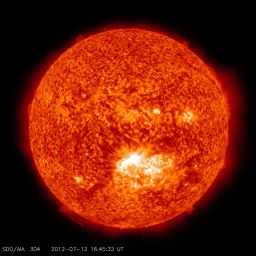Editor’s Note: Dr. Don Lincoln is a senior physicist at Fermilab who does research using the Large Hadron Collider. He has written numerous books and produces a series of science education videos. He is the author of, most recently, “The Large Hadron Collider: The Extraordinary Story of the Higgs Boson and Other Things that Will Blow Your Mind.” Follow him on Facebook. The opinions expressed in this commentary are solely those of the author.
Story highlights
2015 Nobel Prize in physics went to two researchers for their groundbreaking research on neutrinos
Don Lincoln: Evidence that neutrinos have mass might lead us to understand the nature of antimatter
October is a sweet month for the scientific community. That’s when the annual Nobel Prize in physics is announced. Tuesday’s award – in a pleasant surprise for particle physicists – went to Takaaki Kajita of the University of Tokyo and Arthur B. McDonald of Queen’s University in Canada for their groundbreaking research on neutrino oscillations.
Neutrinos – electrically neutral subatomic particles – are everywhere in the universe. They’re like ghosts of the subatomic world, interacting so little with ordinary matter that they can pass through the entire Earth with hardly a flutter. They are also chameleons that can change their identity, much as if ordinary cats could change into tigers and then lions, before changing back into cats again.

Neutrinos were originally thought to be massless since they move at nearly the speed of light. But with this idea, scientists ran into discrepancies in their many measurements. What Kajita and McDonald found is that, actually, neutrinos do have mass, and this may change our understanding of matter as well as the universe. As the Royal Swedish Academy of Sciences rightly puts it, “For particle physics, this was a historic discovery.”
2015 Nobel Prize in physics: What are neutrinos?
After years of indications, in 1998 the Super-Kamiokande experiment in Japan, led by Kajita, found definitive proof that neutrinos created in the Earth’s atmosphere by cosmic rays from space were changing their identity. A few years later, in 2001, the Sudbury Neutrino Observatory facility, helmed by McDonald, were able to determine that neutrinos created in nuclear reactions in the sun were morphing their identities between three distinct types of flavors.
Neutrinos are unique in the world of fundamental subatomic particles in their ability to transform their very identity. This is an enigma. Despite years of effort, the exact mechanism whereby this transformation occurs eludes the very best scientific minds, although there have certainly been many ideas on it.
One of the most promising ideas tie the oscillation of neutrinos with the fact that our universe exists at all. Shortly after the Big Bang, the universe was filled with a hot soup of energy and matter. As Albert Einstein discovered, energy and matter are really the same thing. We now know that it is more accurate to say that energy can convert into matter and antimatter in equal quantities.
So, as the universe cooled, prodigious (and equal!) amounts of matter and antimatter were created. Yet in our current universe, we see only matter. So where did the antimatter go? Nobody knows the answer, but it is looking possible that the story of neutrino oscillations could well pay an important role.
In 2013, the particle physics community conducted a yearlong intensive inquiry into the most pressing questions of the 21st century. A handful of top goals came out of the process, including “Execute a program with the U.S. as host that provides precision tests of the neutrino sector with an underground detector.”
Fermi National Accelerator Laboratory, located just outside Chicago, has long been involved in neutrino physics, generating beams that pass through the Earth to hit detectors in northern Minnesota. These beams have allowed scientists to study neutrino oscillation in great detail and established the U.S. as a leader in neutrino physics. With the 2013 study, an idea for a new facility emerged. This future endeavor is called the Deep Underground Neutrino Experiment, or DUNE.

DUNE is an ambitious project to send the world’s most powerful beam of neutrinos from Fermilab to an abandoned gold mine 800 miles away in South Dakota. Located in a vast cavern nearly a mile underground, the powerful detector will study neutrino oscillations and try to answer questions such as: How do the three distinct flavors of neutrinos oscillate into one another? Which one of them is lightest or heaviest? How do they interact with antimatter?
This project is an international collaboration, drawing leading researchers from around the world to enhance the experiment’s capabilities and cementing it as the world’s leading neutrino facility for the next several decades.
Neutrinos might hold the key to unlocking some of nature’s most profound secrets. What we learn about the matter/antimatter asymmetry could change our very understanding of how the universe evolved to the present day. Tuesday’s Nobel Prize is recognition of the early contributions of these extraordinary researchers.
Space weather: Fine, with a chance of solar flares
Join us on Facebook.com/CNNOpinion.
Read CNNOpinion’s Flipboard magazine.






































































